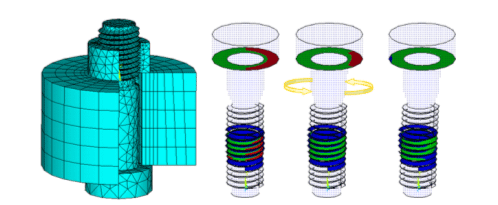 |
 |
|
|||||||||||||||||||||||||
|
| Towards reliability engineering based in material fracture mechanics |
Shinsuke Sakai, Prof., Graduate Engineering Program, Mechanical Engineering Major I have continued to research in the field of reliability engineering ever since I chose it as my graduate dissertation theme. Within this field, I focus on fracture mechanics and risk based engineering. Risk based engineering incorporates the concept of risk management into the maintenance of machines and structures, defines and evaluates risk as "a product of the failure probability and consequence," and is a theory for surveying and maintenance. In general, long-term continuous operation for machines and atomic power plant facilities provides better efficiency and lower maintenance costs. However, in Japan particularly frequent and routine inspections are common, resulting in low efficiency and a large difference in the inspection program and the amount of deterioration actually found. Also, increasing inspection frequency in nuclear plants, for example, means an increase in the danger of radiation exposure for plant inspectors. Conducting the same inspection each time also has the demerit of creating a situation where those in charge stop thinking actively. It is necessary to make judgments based on evaluations of permissible and impermissible defects and conduct flexible maintenance. The academic field of fulfilling the social responsibility of guaranteeing safety while conducting scientific and economic maintenance as well as evaluations of continual usability is called risk based engineering. Currently, maintenance guidelines are being developed via risk based engineering by The Japanese Society of Mechanical Engineers in the field of nuclear power and the RBM (risk based maintenance) research group of the High Pressure Institute of Japan in the field of non-nuclear energy sources. Also, the Industry-Academia Joint Manufacturing Human Resource Training Project of the Ministry of Economy, Trade and Industry is involved in the cultivation of a workforce to execute risk management and the construction of a failure probability database which compiles example cases of symptoms of breakage in pipes of nuclear power plants and chemical plants. Via these sorts of actions, it is my hope that research findings are used to contribute to society and that reliability engineering will be taken root in Japanese soil. Via the Hyper Modeling / Simulation Project, 21st Century COE Program is overseeing material strength and interfacial multi scale analysis such as MEMS (Micro Electro Mechanical Systems). The components that make up the analysis base are the finite element method, molecular dynamics, and electron density analysis. The non-loosening bolt nut developed last year via joint research with a manufacturer is one achievement of simulation. First, the state of the bolt and bolt nut loosening was simulated via a computer. Then, based on the results of that simulation, the method was developed in which after inputting an incision in the nut face, it was curved using air pressure from the top. By doing this, because the screw thread contact surface ceases to be uniform, loosening becomes difficult. This bolt nut did not loosen even after 100 oscillation experiments following NASA standards, and can be removed with a spanner and reused. |
Research that constantly keeps in mind links to society I have liked machines since childhood. In high school I frequented Akihabara and made radios and amps. When I was given the theme of reliability engineering and risk based engineering by my former teacher in graduate school, Professor Hiroyuki Okamura (former Tokyo University of Science Dean), there were very few researchers in this field and the importance was difficult to see. However, in continuing my research, I began to understand the necessity, the depth of the theme, and the strain of society connected to risk. I began to feel a definite calling towards research in that area. Thinking of the increasing need for this area of study in today's society, I am grateful to the foresight of my professor. As a risk based engineering specialist, I feel that I must perform risk management in my own life as well. By revolving through the PDCA (Plan, Do, Check, Action) cycle, which is the foundation of safety management, in the morning I create and execute the plan for that day, and aim to improve through performing checks. From the time young researchers are in college, I wish for them to develop the habit of constantly considering links to society. When conducting high level theoretical research at college, there are many cases of difficulties due to the industry not existing at that level. It is necessary for researchers as well to work towards diminishing this gap. I feel that being aware of how one's own research can benefit society is the cornerstone of being an engineer. |
 The mechanism that prevents bolts from loosening was simulated via computer using the finite element method. The finite element method minutely segments the calculation target range, calculates using functions common to the sub-ranges, and finds the overall sum. It is a method used for targets which cannot be analyzed simply.The findings of this research led to the development of non-loosening bolts with uneven contact surfaces for the screw threads. |
 <Personal Background>
<Personal Background>After graduating from the Mechanical Engineering Department in the College of Engineering of The University of Tokyo in 1975, Mr. Sakai completed doctorate work in the Engineering Graduate Program (Marine Mechanical Engineering Major) of The University of Tokyo in 1980 and became a Doctor of Engineering. From that year he became a lecturer in the College of Engineering at The University of Tokyo, and became an assistant professor in 1981. In 1995 he became an assistant professor in the Engineering Graduate Program, and has worked in his current position since 1997. |
| <<Back | Page top |